Isabella Bradford's Blog, page 56
May 21, 2016
Breakfast Links: Week of May 16, 2016
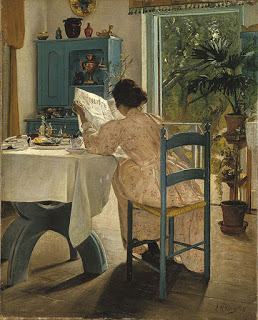 Breakfast Links are served - our weekly round-up of fav links to other web sites, articles, blogs, and images via Twitter.
Breakfast Links are served - our weekly round-up of fav links to other web sites, articles, blogs, and images via Twitter.• The Swan with Two Necks and other important London coaching inns in early 19thc London.
• The First Children who led sad lives.
• The hidden messages of colonial handwriting .
• The deadly pain medicine sold by skeletons .
• Image: A Victorian book called Pleasing Stories for Pleasant Children naturally begins with King Herod ::shudder::.
• " Novelties that Create Fun" c1920.
• "This faithful machine": the literary history of word processing .
• Who could marry whom - a matter of concern to the law.
• The insults that sparked duels in Alexander Hamilton's America.
• Who let the dogs out?
• Art history project replicates hair styles worn by Porch Maiden caryatids on the Athenian Acropolis.
• Eavesdropping on Weimar: the true story behind the bestseller & movie Grand Hotel .
• Couture copies in America.
• Image: An 18thc snapshot of the grim conditions for bound coal miners in Scotland who have escaped from their master.
• The worst epidemic in 18thc North America (and it's not what you think.)
• Workhouse diets: paucity or plenty? Part two here .
• An important part of the early slave trade, Narragansett Pacers were one of America's earliest and most reliable breeds of horses.
• The biggest cat painting in the world.
• Image: The severed head of Medusa stares out from this 1911 silver-gilt relief.
• Airships over London, in war and in peace.
• A conspiracy unraveled: the murder of Captain Joseph White, 1830.
• Isaac Newton and the apple: the story and the myth.
• Glorious watercolors of tulips , the favorite flower of the 17thc.
• Image: John Adams' " Miss Adorable " letter to Abigail, 1762.
• "Time me, gentlemen": Dr. Robert Liston, the fastest surgeon of the 19thc.
• The flattering tricks of 19thc portraiture .
• A visit to the blacksmith's shop at Gretna Green - an infamous Regency landmark.
Hungry for more? Follow us on Twitter @2nerdyhistgirls for fresh updates daily.
Above: At Breakfast by Laurits Andersen Ring. Private collection.
Published on May 21, 2016 14:00
May 19, 2016
Friday Video: Food Shopping Tips for 1950
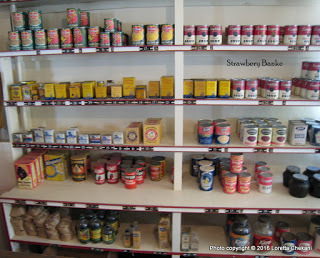 Interior, Marden-Abbott Store
Interior, Marden-Abbott StoreStrawbery Banke Museum Loretta reports:
Today's video called to me because I grew up living behind the shop, that is to say, behind a small Mom and Pop store. In those days, what today we’d call a convenience store was "the corner store," which Worcesterites called a spa—and no, I have no idea why.
The main articles on offer at our place were canned goods, bread, milk, soda, cigarettes, and penny candy—and then, a few years after the store opened, there was a snack bar, too, which became very popular. In any case, neither our shop nor even the supermarkets, as they were then, were anything like today's mega-super-duper-supermarkets. A tangerine was about as exotic as things got in the produce aisle.
Though my parents set up shop a decade or so later than today’s video, we girls learned these same shopping principles, at home and in Home Economics classes. No, the boys weren’t taught, although, if the video offers a clue, they could have used the lessons.
Image: Interior of Marden-Abbott Store (WWII era) at Strawbery Bank Museum , courtesy me.
Readers who receive our blog via email might see a rectangle, square, or nothing where the video ought to be. To watch the video, please click on the title to this post.
Published on May 19, 2016 21:30
May 18, 2016
Update: More About Those 18thc Leather Stays
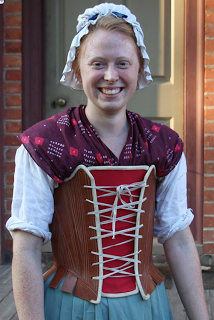 Isabella reporting,
Isabella reporting,Last fall I shared a post about the replica leather stays that were being made at Colonial Williamsburg . Following historical examples, the stays were made by leather-workers Jay Howlett and intern Emma Cross for two of CW's apprentices: blacksmith Aislinn Lewis and tinsmith Jenny Lynn. When I wrote more about Jenny's 18thc clothing on Monday, reader Adam Cyphers asked if there was an update on how the leather stays were working "in the field."
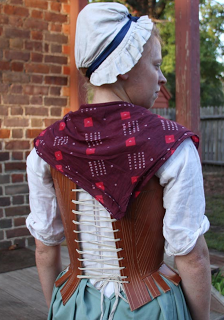
The answer is a little mixed. In the pictures above, Aislinn is wearing her stays. As a woman working in a physical trade, she might well have worn the stays like this as an outer garment, and without a bodice or gown over it. Yes, stays were undergarments in the 18thc, but since they were always worn over a linen shift and not against the skin, it wasn't scandalous to wear them like this; it was considered practical.
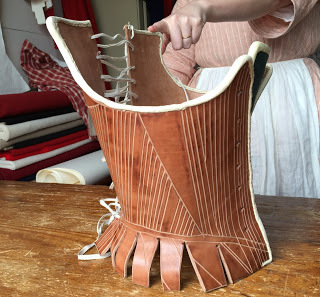
Jenny's stays weren't as successful, with the original measurements just enough off to make them uncomfortable to wear for a full day's work. Because the stays are cut from single pieces of leather and scored instead of seamed, there isn't a way to adjust or modify them, and the stays are now being used for display in the Margaret Hunter Millinery shop, left. As you can see, however, Jenny did wear the stays long enough for them to begin to assume her shape.
While Jenny waits for another pair, she's wearing a different kind of stays that were popular with working-class women. Hers are stiffened not with whalebone (baleen) strips - used in the more expensive stays of the 18thc - but with thin oak splints that are also used in basketmaking. These stays are Jenny's favorites for everyday, and for now, they're more comfortable, too.
Top: Photographs ©2015 Colonial Williamsburg's blog, Making History .
Below: Photograph ©2016 Susan Holloway Scott.
Published on May 18, 2016 21:00
May 16, 2016
Lansdowne House in Berkeley Square
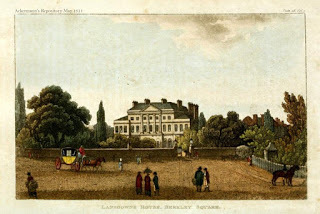 Lansdowne House 1811
Lansdowne House 1811
Loretta reports:
By now everybody’s aware of my fascination with lost architecture. Unlike Northumberland House , Lansdowne House isn’t completely lost. A still-impressive piece of it remains in Berkeley Square, as the home of the Lansdowne Club ,*
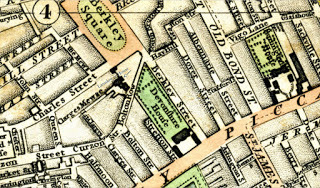 from 1818 London map
and a drawing room is in the Lloyd’s Building. Other pieces (of the interior) are scattered hither and yon, including another drawing room, now in the Philadelphia Museum of Art, and a dining room in NYC’s Metropolitan Museum of Art.
from 1818 London map
and a drawing room is in the Lloyd’s Building. Other pieces (of the interior) are scattered hither and yon, including another drawing room, now in the Philadelphia Museum of Art, and a dining room in NYC’s Metropolitan Museum of Art.You can learn a great deal more about the house, its contents, and where they’ve gone, here at the DiCamillo Companion site.
*Visiting the club’s site will reward you with a history and some lovely old and new, mainly interior, photos of the building, including some fine Art Deco work from the 1930s.
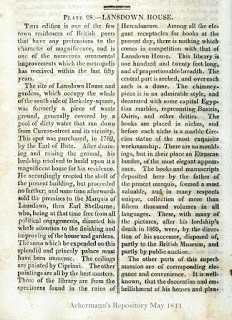 Lansdowne House description
Note: “It was from its inception the only private members club in London where ladies had equal standing with men as they still do.”
Lansdowne House description
Note: “It was from its inception the only private members club in London where ladies had equal standing with men as they still do.”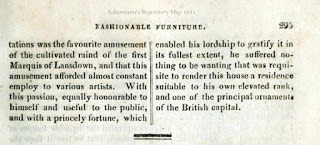
Clicking on the image will enlarge it. Clicking on the caption will take you to the source, where you can learn more and enlarge images as needed.
Published on May 16, 2016 21:30
May 15, 2016
What the Apprentice Tinsmith Wore, c1775
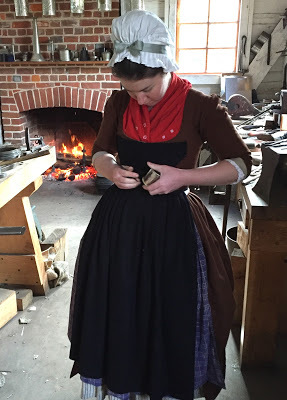 Isabella reporting,
Isabella reporting,It's easy enough to see how the nobility and royalty dressed in the 18thc; there must be scores of portraits, paintings, and prints documenting the wardrobe of Marie Antoinette, Queen of France. But it's much more of a challenge imagining the clothing of ordinary women whose lives weren't as thoroughly documented. Thanks to the professional staff of Colonial Williamsburg , I've shared several posts featuring the clothes of Colonial American and English women c1775, and here are the links to the posts for a mantua-maker's apprentice , a housewife of the middling sort, a maidservant , a seamstress , and a female blacksmith .
The latest in my series shows one of the newer apprentices in Colonial Williamsburg's historic trades program. Jenny Lynn is serving her apprenticeship to become a tinsmith. Tinsmiths (also called whitesmiths) made and repaired objects - including pans, pots, kettles, cups, lanterns, plates, funnels, and saucers – that were commonly found in most 18thc homes and workplaces; see here for more about the tin shop and tinsmith's historic trade at Colonial Williamsburg.
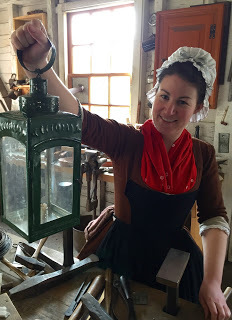
Finding Jenny working in an 18thc tin shop isn't a 21stc equal-opportunity anachronism. Diderot's famous Encyclopédie, published between 1751-1772, showed women workers in the plate on tin making: "Metallurgie, fer blanc": (detail, lower right). There are documented examples of women tinsmiths in 18thc Britain, France, and colonial America, including a daughter continuing her mother's trade in South Carolina.
But while women are mentioned in advertisements, newspapers, and other documents, there are no known images of colonial women tinsmiths. When it came to researching what Jenny should wear for her apprenticeship in the shop, CW's historians in the Costume Design Center chose to dress her as a working-class tradeswoman. She's shown here wearing a brown wool gown over a striped linen petticoat, a checked linen apron, a cotton neckerchief filling in her neckline, and a linen cap covering her hair. Everything is handsewn. Long hand-knitted wool mitts, lower left, would have kept her forearms warm and protected them from sparks while keeping her fingers free for work.
She's also wearing stays (the 18thc word for a corset.) Not only would stays have been worn by her 18thc counterpart to maintain a fashionable and respectable silhouette, but the boned undergarment helps support her back during long days at her workbench.
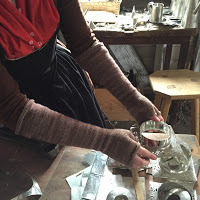
Her most important garment for work, however, would be her black wool apron, or pinner, because it pins to the front of her bodice to protect her gown and petticoats. The women in the Diderot plate are wearing similar pinner aprons. At first Jenny wore a pinner of white linen, the most common kind for the time. But the white linen didn't work for tinsmithing. The white failed to offer enough contrast while working with the brightly polished metal. More importantly, the hot flux used in soldering the tin is made from acidic pine rosin, which ate through the linen apron.
Jenny switched to a black wool pinner, and both problems were solved. The wool resisted the acidic rosin and any stray sparks from the fire, and presented good contrast for working. Jenny isn't alone, either. Based on historical records as well as preferences, the male tinsmiths and several of the blacksmiths wear baize (a heavy woolen) aprons as they work, too.
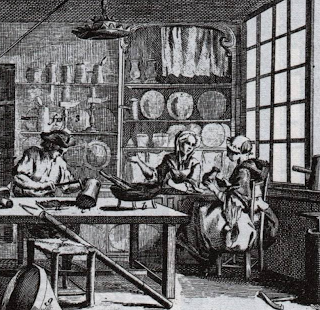
A note about that black pinner. When I wrote a post last year about how the mantua-makers at Colonial Williamsburg were experimenting with black silk pinners for embroidery, I inadvertently ignited a minor furor on social media. Purists among reenactors maintained that if there wasn't primary source proof of the black pinners in use in colonial Virginia, then they should not be employed for interpretations. Ever. However, when that proof doesn't exist, sometimes even the most conscientious scholars have to rely on hands-on experience and a bit of ingenuity as to what works and what doesn't - exactly as an enterprising 18thc woman would have done as well.
Photographs ©2015 by Susan Holloway Scott.
Published on May 15, 2016 19:27
May 14, 2016
Breakfast Links: Week of May 9, 2016
 Breakfast Links are served - our weekly round-up of fav links to other web sites, articles, blogs, and images via Twitter.
Breakfast Links are served - our weekly round-up of fav links to other web sites, articles, blogs, and images via Twitter.• Brains plus bonnets equal an historic first: meet Mary Kies , America's first woman to become a patent holder.
• London watermen's steps in Wapping.
• Six lesser-known female pioneers of 19thc photography.
• A brief history of menstruating in outer space.
• Knitting for victory: a how-to book of projects for men serving in World War One.
• Image: "Have dinner at one, dear": 1897 stereocard shows a dramatized version of the " new woman " and her bicycle.
• Thirsty? Documenting the fresh-water springs and wells that used to be in New York City.
• The Scottish Play and the real Macbeth .
• Early color photographs of Russia from the Library of Congress.
• The 19thc Cherokee Phoenix allowed a people to speak with a newly created voice.
• Enjoy a virtual tour of George Washington's Mount Vernon.
• Image: Lady Duff Gordon - also known as the designer Lucile - fashionably dressed on the deck of the Titanic.
• Dressing the part for Carnival .
• "Summer, sun-brightest": an Anglo-Saxon summer .
• The story of a Rembrandt painting 's complicated journey from a basement in New Jersey to the Getty Museum.
• The effulgence of country gardens - on velvet.
• How was Napoleon's death reported by the newspapers?
• The life and death of Mummy Brown.
• Found in Yorkshire: a gold ring, possibly worn by royalty, from the 5th-6thc, and with a sapphire that came from Sri Lanka.
• Image: An American woman teaches English busboys how to do the Charleston , 1925.
• No men were allowed at a Puff Pant Prom in the 1920s-30s.
• "Human serpents sent to us by our Mother Country": the transformation of Anthony Lamb , transported convict, 1724.
• Dressing up smart for God in the Tudor church.
• Twelve word facts you may not know about cake .
• Explore the photos of old NYC from the New York Public Library with their new free app.
Hungry for more? Follow us on Twitter @2nerdyhistgirls for fresh updates daily.
Above: At Breakfast by Laurits Andersen Ring. Private collection.
Published on May 14, 2016 14:00
May 12, 2016
Friday Video: An Extravagant Desk and Dressing Table, c.1765-1770
Isabella reporting,
Last month I shared an 18thc gaming table that magically unfolded to accommodate several different game boards - the work of German master cabinetmaker David Roentgen (1743-1807.) Today I have another piece made by David Roentgen and his father, Abraham (1711-1793.) This is a rolltop desk, useful for reading or writing, that could transform into a poudreuse, or dressing table. Behind the elaborately embellished surfaces are nearly forty compartments and drawers that would have offered the fortunate owner a place for every possible beauty item.
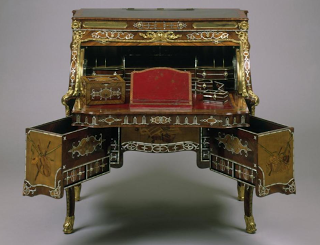
The front of the desk has an elegant monogram of inlaid mother-of-pearl with an intertwined "MA" that was long believed to belong to Marie Antoinette, Queen of France. But according to the web site of Hillwood Museum, which now owns the desk, the letters more likely belong to another noteworthy lady of the 18thc, Maria Antonia, Princess of Bavaria and the Electress of Saxony.
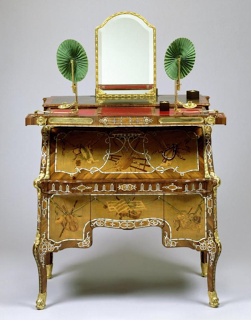
"Maria Antonia was a talented and artistic woman....Not only was she a respected composer and patron of the arts, she also served as regent of Saxony from 1763-1768 until her son came of age. The musical instruments and other images on the marquetry reflect her artistic interests and pursuits."
More recently, the desk belonged to yet another extraordinary woman, American socialite and businesswoman Marjorie Merriweather Post, who bequeathed it to the museum.
See here for video of another amazing desk made by the Roentgens.
Rolltop desk, made by Abraham Roentgen II and David Roentgen, 1765-1770, Hillwood Museum.
Published on May 12, 2016 21:00
Clandestine Marriage Attempted 1846
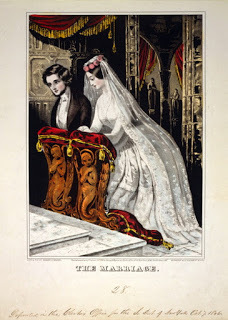 The Marriage ca 1846
Loretta reports:
The Marriage ca 1846
Loretta reports:From the Annual Register Vol 88, Chronicle for 2 May 1846 —
2. A Marriage In High Life Prevented.—This morning, just as the Rev. M. D. Ffrench was about to commence the morning service at St. George's Hanover Square, a license for marriage was presented by a lady and gentleman. Upon the document being read, the reverend gentleman was much surprised to find that it authorized the performance of the ceremony for parties no less distinguished than the Lady Anna Eliza Mary Temple Nugent Brydges Chandos Grenville, daughter of Richard Plantagenet, Duke and Marquis of Buckingham and Chandos, and Gore Langton, Esq., son of Colonel Gore Langton. The late hour at which the proposed bride and bridegroom reached the church rendered it impossible for the ceremony to be performed previous to the morning service. Mr. Ffrench, in the meantime, seeing that the bride and bridegroom were not accompanied by any of their friends, and fearing that the proposed marriage was a clandestine one, sent a messenger to the Duke of Buckingham to inform him that a marriage in which he was so deeply interested was about to take place.2nd Duke of Buckingham & ChandosAfter a pause of incredulous amazement, the Duke hastened to St. George's Church. In the meantime the morning service had been completed, and the preliminaries had been duly performed in the vestry, and the parties had proceeded to the altar to have their union completed. The clergyman had just commenced, when the Duke of Buckingham arrived, and warmly expressed his decided objection to the performance of the ceremony. On the other hand, Mr. Gore Langton and the lady claimed as a matter of right that the ceremony should proceed immediately. Mr. Ffrench calmly stated that his duty did not afford any option; the parties were, it appeared, of mature age, the license was in all respects sufficient, and he was bound to perform the ceremony without further delay.
A scene of painful excitement ensued; but finally the clergyman declined to perform the ceremony, and the lady retired with her father. It was stated that the objection of the noble parents of the bride were not so much directed against the person of the bridegroom, (although much surprised at the discovery of the attachment,) as to the clandestine manner in which the union was about to take place. The parties were subsequently united, with the consent, but not in the presence of the Duke and Duchess.
Image: The Marriage , ca 1846, lith. & pub. by Sarony & Major, courtesy Library of Congress Prints and Photographs Division Washington, D.C. 20540 USA.
Richard James Lane, 2nd Duke of Buckingham and Chandos , circa 1825-1850
Clicking on the image will enlarge it. Clicking on the caption will take you to the source, where you can learn more and enlarge images as needed.
Published on May 12, 2016 04:45
May 9, 2016
Portraits that Stayed Fashionable, c1775
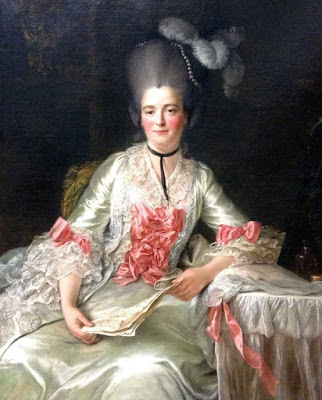 Isabella reporting,
Isabella reporting,When I saw this portrait, above left, last month at the Metropolitan Museum of Art, I was puzzled by the lady's hair. Here on the blog, we're no strangers to 18thc Big Hair (see here and here ), but the exaggerated styles don't come into fashion until the mid-1770s, and this woman's dress with the wealth of bows is firmly around 1760, which is where the museum places it, too.
So how did she manage to be so fashion-forward for her portrait? Turns out it's a case of 18thc celebrity Photoshop. Marie Rinteau and her sister Geneviève were celebrated beauties who, according the museum's notes, converted fleeting musical careers into the more profitable ones as "cultured courtesans known as les demoiselles de Verrières." Marie was the mistress of soldier and courtier Maurice de Saxe, and bore him an illegitimate daughter, Marie Aurore.
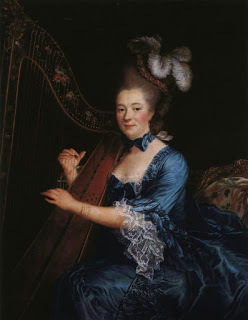
In 1761, the two sisters had their portraits painted by François Hubert Drouais (1727-1775), an artist who specialized in beautiful portraits of beautiful women; among his sitters was Louis XV's mistress Madame du Pompadour. The sisters were painted in rich settings, wearing lavish silk gowns with costly lace. To indicate their musical talents, Marie is holding sheet music, while Geneviève is shown gracefully playing her harp. They were also originally painted with the hairstyles of 1760, which were tightly curled and close to the head, much like another lady that Drouais painted around the same time, below left.
Fifteen years later, however, the demoiselles decided that their portraits needed to be updated. Either Drouais or another artist added the latest hairstyles sweeping upwards from their foreheads and decorated with plumes and festoons of silk flowers and faux pearls. Yet like the infamous portrait of Dorian Grey, their painted faces remained unlined and youthful.
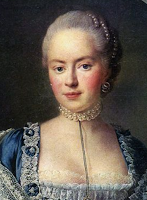
Marie died in 1775, aged around forty-five. Perhaps this refurbishing was a final small vanity before her death, or perhaps it was her way of stalling the inevitable in a "career" that would have become increasingly difficult to maintain as the years passed. Either way, I'm sure she'd be pleased that her portrait is now admired by hundreds of visitors a day in one of the greatest museums in the world - and her hair is perfect.
Above left: Detail, Marie Rinteau, called Mademoiselle de Verrières, by François Hubert Drouais, 1761, Metropolitan Museum of Art.
Right: Geneviève Rinteau de Verrières by François Hubert Drouais, 1761, private collection.
Bottom left: Detail, Countess Darya Petrovna Saltykova, by François Hubert Drouais, c1760.
Published on May 09, 2016 21:00
May 8, 2016
The Church on Mulberry Street Moves to Demolition Row
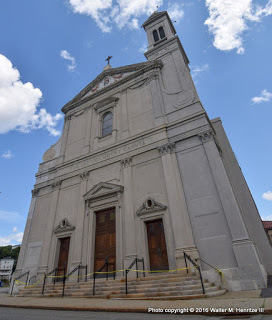 Loretta reports:
Loretta reports:Those driving on I-290 through Worcester, MA are familiar with what my husband calls “Our Lady of the Highway.” In the city’s 1960s grim era of “urban renewal,” this new highway cut through and leveled old, stable neighborhoods. Among other consequences, Our Lady of Mount Carmel church on Mulberry Street, whose front faces the highway, has been getting a daily dose of shake, rattle, and roll (tiny, repeated earthquakes, in other words) since the highway was completed.
Now it’s closed and awaiting the wrecking ball.
The church is familiar to me, not through religion, but because of the area in which I grew up and the friends of my youth. Built by Italian immigrants & their descendants (who paid cash) in the 1920s, it’s the heart of one of Worcester’s many ethnic neighborhoods. It’s also been the starting point of an annual festival I remember fondly. During my junior high school years (preteen-early teens), the church’s recreation center was one of the few places where my parents would allow me to go dancing.
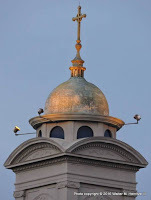
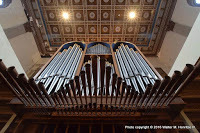 If I remember Mount Carmel fondly, I can imagine the parishioners’ feelings about the church their parents and grandparents built, and wasn’t at all surprised when a passionate debate broke out about the demolition decision.
If I remember Mount Carmel fondly, I can imagine the parishioners’ feelings about the church their parents and grandparents built, and wasn’t at all surprised when a passionate debate broke out about the demolition decision.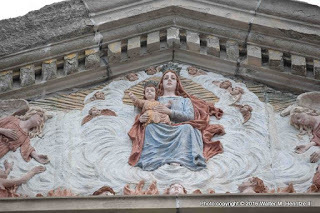 Is the (steel) structure sound or isn’t it? Is the crumbling façade the only problem? Should we blame its condition on the highway or on some poor maintenance decisions? Ought the parishioners to have spoken up or ponied up before now? And so on. You can get a glimpse of the issues
here
(also a great view of the church from the highway) and
here
and
here
.
Is the (steel) structure sound or isn’t it? Is the crumbling façade the only problem? Should we blame its condition on the highway or on some poor maintenance decisions? Ought the parishioners to have spoken up or ponied up before now? And so on. You can get a glimpse of the issues
here
(also a great view of the church from the highway) and
here
and
here
.Everybody, in short, has something to say, and the newspapers don’t even begin to cover the controversy details/accusations/counter-accusations.
Meanwhile, continuing his campaign of documenting the city’s historic architecture, mio marito (that’s Italian for my husband) turned up at the last Mass and took some pictures. OK, like a thousand.
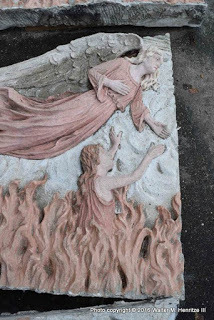 Crumbling or not, Mount Carmel is, to my eyes, one of the prettier churches in the city, at the head of one of Worcester's most vibrant areas—although, until I looked at his photos, I didn’t realize those souls at the bottom of the pediment were roasting in the flames of Hell!
Crumbling or not, Mount Carmel is, to my eyes, one of the prettier churches in the city, at the head of one of Worcester's most vibrant areas—although, until I looked at his photos, I didn’t realize those souls at the bottom of the pediment were roasting in the flames of Hell!All images © 2016 Walter M. Henritze III
Clicking on the image will enlarge it.
Published on May 08, 2016 21:30



